Venezia, gli Ebrei e l'Europa 1516-2016
Dal 19 June 2016 al 13 November 2016
Venezia
Luogo: Palazzo Ducale
Indirizzo: San Marco 1
Orari: 8.30 - 19 | Ultimo ingresso alle 18 | Dal 1 novembre 8.30 - 17.30 | Ultimo ingresso consentito fino alle 16.30
Enti promotori:
- Comune di Venezia
- Fondazione Musei Civici di Venezia
- Con il contributo di Regione del Veneto
- Venetian Heritage
- David Berg Foundation New York
- Save Venice Inc
- The Gladys Krieble Delmas Foundation
- Fondazione Ugo e Olga Levi
Costo del biglietto: Biglietto unico valido per Palazzo Ducale e per il percorso integrato del Museo Correr, Museo Archeologico Nazionale, Sale Monumentali della Biblioteca Nazionale Marciana. Ha validità per 3 mesi e consente una sola entrata a Palazzo Ducale e al percorso integrato: Intero 19 € | Ridotto 12 €
Telefono per informazioni: +39 041 2715911
E-Mail info: info@fmcvenezia.it
Sito ufficiale: http://palazzoducale.visitmuve.it

Obiettivo dell’iniziativa è quello di mettere in luce la ricchezza dei rapporti tra ebrei e Venezia, tra ebrei e la società civile nei diversi periodi della lunga storia della loro permanenza in laguna, in area veneta e in area europea e mediterranea. Non solo un lavoro d’indagine sull’area specifica dei tre ghetti, ma anche una riflessione sulle relazioni culturali e linguistiche, sulle abilità artigianali e sui mestieri, che la comunità ebraica ha condiviso con la popolazione cristiana e le altre minoranze presenti in un centro mercantile di straordinaria rilevanza quale fu appunto Venezia ai tempi della Serenissima.
L’ipotesi di partenza del progetto è infatti che la storia dell’istituzione del Ghetto debba essere studiata nel quadro della più generale gestione da parte della Repubblica Veneta delle minoranze nazionali, etniche e religiose che vivevano nella città capitale di una ‘economia mondo’, come la chiamava lo storico Fernand Braudel. Ma si tratta anche di spiegare come queste relazioni si siano via via allargate a un ambito geografico molto vasto e siano continuate nel tempo adattandosi ai cambiamenti politici sociali e culturali.
Le sezioni
Prima del Ghetto – Sale 1-2
La Venezia cosmopolita – Sala 3
Il Ghetto cosmopolita – Sala 4
Le sinagoghe – Sala 5
Cultura ebraica e figura femminile – Sala 6
I commerci tra XVII e XVIII secolo – Sala 7
Napoleone: l’apertura dei cancelli e l’assimilazione – Sala 8
Il mercante di Venezia – Sala 9a
Collezioni, collezionisti – Sale 9-10
Il XX secolo – Sale 9-11
Vedi anche:
Oltre il recinto
Il Ghetto di Venezia in mostra
Oltre il recinto. Galleria immagini
Palazzo Ducale
Peggy Guggenheim in Photographs. Storie di talento e audacia
Art of This Century. Peggy Guggenheim in Photographs
Ikona Photo gallery
Collezione peggy Guggenheim
SCARICA IL COMUNICATO IN PDF

-
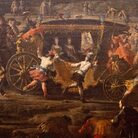 Dal 20 December 2025 al 20 April 2026
Caserta | Reggia di Caserta
Dal 20 December 2025 al 20 April 2026
Caserta | Reggia di Caserta
Regine: trame di cultura e diplomazia tra Napoli e l’Europa
-
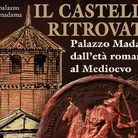 Dal 19 December 2025 al 23 March 2026
Torino | Palazzo Madama - Museo Civico d’Arte Antica
Dal 19 December 2025 al 23 March 2026
Torino | Palazzo Madama - Museo Civico d’Arte Antica
Il castello ritrovato. Palazzo Madama dall’età romana al medioevo
-
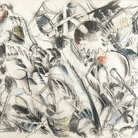 Dal 17 December 2025 al 19 January 2026
Roma | Palazzo della Cancelleria
Dal 17 December 2025 al 19 January 2026
Roma | Palazzo della Cancelleria
De Humana Mensura di Linda Karshan
-
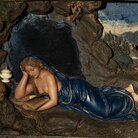 Dal 18 December 2025 al 12 April 2026
Firenze | Gallerie degli Uffizi
Dal 18 December 2025 al 12 April 2026
Firenze | Gallerie degli Uffizi
Cera una volta. Sculture dalle collezioni medicee
-
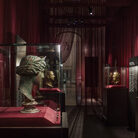 Dal 11 December 2025 al 9 April 2026
Firenze | Museo Archeologico Nazionale di Firenze
Dal 11 December 2025 al 9 April 2026
Firenze | Museo Archeologico Nazionale di Firenze
Icone di Potere e Bellezza
-
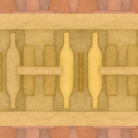 Dal 11 December 2025 al 11 January 2026
Roma | Palazzo Esposizioni Roma
Dal 11 December 2025 al 11 January 2026
Roma | Palazzo Esposizioni Roma
Giorgio Morandi nella Collezione Eni. Un viaggio attraverso la storia culturale del cane a sei zampe e l’eredità di Enrico Mattei



